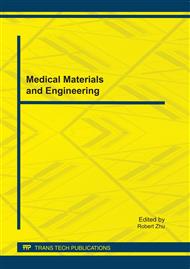p.355
p.360
p.369
p.374
p.379
p.385
p.394
p.400
p.406
Optimization of DPPH Radical Scavenging Activity of Exopolysaccharides from Marine P. chrysogenum HGQ6 in Submerged Fermentation Using Response Surface Methodology
Abstract:
The objectives of this study were to investigate the effect of fermentation medium on the DPPH radical scavenging activity of exopolysaccharides from marine Penicillium chrysogenum HGQ6 by response surface methodology (RSM). A two-level fractional factorial design was used to evaluate the effect of different components of the medium. Maltose, FeSO4, and K2HPO4 were important factors significantly affecting DPPH radical scavenging activity. These selected variables were subsequently optimized using a Box-Behnken design, and response surface analysis. The optimal medium compositions were (% w/v): maltose 2.71, FeSO4 0.0016, K2HPO4 0.1, and KNO3 1.0. Under these optimal conditions, the DPPH radical scavenging rate achieved 34.0%, which agreed with the predicted values.
Info:
Periodical:
Pages:
379-384
Citation:
Online since:
November 2011
Authors:
Price:
Сopyright:
© 2012 Trans Tech Publications Ltd. All Rights Reserved
Share:
Citation:


